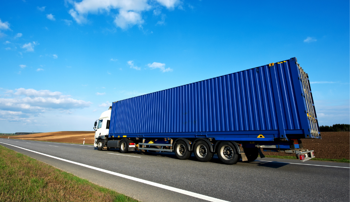
The UK has not been part of the EU’s single market since January 2020. Despite this, the additional regulations imposed for shipping goods to and from the EU can still cause some confusion for those involved in selling and fulfilling business to consumer sales between the UK and remaining EU countries.
If you fall into this category, either as an independent multichannel retailer or 3PL fulfilment organisation that supports multiple multichannel B2C retailers, this article will help you in understanding some of the options available, such as how to get an IOSS number and why you need one.
The Tax conundrum: Who pays what now?
When selling to a non-UK customer you can’t charge the buyer UK VAT. Therefore, the majority of goods sold online should be zero-rated and tax is calculated based on the destination countries VAT rates. Therefore you should declare order values exclusive of UK VAT so the correct Gross Order Value can be calculated against the goods.
Zero-rated goods are still subject to tax, the seller still needs to account for them through VAT accounts and report them on VAT returns. This makes selling into the EU rather complex, as you would need to register, declare and pay VAT in each of the EU countries in which they sell to consumers. That was until the introduction of IOSS…
What does IOSS mean?
Import One Stop Shop (IOSS) was introduced to allow registration for VAT in a single EU state, which means that you are only required to file one VAT return for all EU transactions up to €150.
It was introduced to simplify the process of accounting for VAT as you have a single VAT rate for the EU member state which all EU transactions can be calculated against. You still need to calculate the correct Gross order value to be charged to the customer, but at least it’s only one VAT rate that needs to be considered.
For those that use online marketplaces such as Amazon and eBay it is even simpler, as the online marketplace provider takes on the responsibility of being the supplier and therefore the responsibility of accounting for VAT at the point of sale. Once registered, you receive an IOSS vat number for shipping. So if self-registered, it will be an IOSS number unique to your business. If using a registered online marketplace, they will provide you with their unique IOSS number.
Once you have a valid IOSS number you just need to ensure the order value is less than €150 (excluding UK VAT) and the number is provided to the chosen shipping provider so they can prove to customs that VAT has already been paid. If the order value is over €150, or you don’t have a valid IOSS number to use then the two options commonly used are DDP (Delivered Duty Paid) and DAP/DDU (Delivered at Place).
How do I get an IOSS number?
You must have an IOSS number if you are a distance seller or marketplace looking to sell goods to buyers in the EU. If you are within the EU you can get an IOSS number by registering with IOSS directly or through an IOSS intermediary. If you’re not within the EU then you can only get an IOSS number from an intermediary.
If you don’t use the IOSS scheme, then the customer receiving the parcel will be required to pay the VAT before they are delivered the goods.
What is Delivered Duty Paid (DDP)?
Delivered Duty Paid (DDP) is where the seller takes responsibility for all customs tax and duty, as mentioned above. In this scenario, it is important that Tax and Duty are calculated and added at the point of sale. It can not be charged retrospectively, and so if not calculated correctly the seller can become liable for charges not covered by the sale.
Delivered-at-Place (DAP)/Delivered Duty Unpaid (DDU)
Delivered-at-place (DAP) replaced delivered duty unpaid (DDU), but as DDU is still commonly used it’s been included here. Essentially this is where the buyer is responsible for covering all tax and duty custom charges.
DDP and IOSS provide the customer with a great experience as they have no hidden fees and what they pay at checkout is all they have to worry about.
In contrast, although DAP removes all responsibility from the seller, de-risking the sale, it can negatively impact the experience the buyer has. This is because they may receive fees they were unaware of, which could impact future sales and customer loyalty.
Final thoughts
It’s a balance of discovering which is going to be the easiest, lowest risk route for you as a seller vs. the experience offered to your customer when buying goods from you.
By now you can probably see why since Brexit this topic has caused so many issues, not surprising when we consider that 48% of all exports from the UK end up within one of the EU member states. Especially during COVID-19, dealing with the problems a 3PL faces in this landscape is an increasingly important issue.
All that said, the introduction of IOSS, should help simplify the process for selling goods to the EU enough for multichannel retailers to continue to expand their international operations further, which can only be a positive thing for all those that are involved in supporting them to fulfill their orders.
How we help
At Mintsoft, our Warehouse Management Software can help make things as simple as possible for you, as Mintsoft customers can input their IOSS numbers directly into their dashboard. The IOSS number will then automatically be provided to your courier of choice, so once you’ve inputted the data, your Mintsoft platform will take care of the rest. Read our guide on warehouse management systems to find out more.
Mintsoft’s marketplace integrations also make shipping to the EU even easier, by allowing you to manage everything from one centralised location.
Find out more about our warehouse and shipping management solutions here. Or, if you’d like to know more about Mintsoft and how it can help your business, why not book in a personalised demo with a member of our team today?
